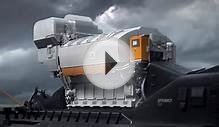
Before we continue any further with electronic ignition systems, it would be worth a quick revision of the basic operation of the four-stroke engine commonly in use today.
The operation is as follows -
1. Intake Stroke - The inlet valve is opened and the fuel/air mixture is drawn in as the piston travels down.
2. Compression Stroke - The inlet valve is closed and the piston travels back up the cylinder compressing the fuel/air mixture. Just before piston reaches the top of its compression stroke a spark plug emits a spark to combust the fuel/air mixture. The number of degrees before the top its stroke is the ignition advance. When the piston is at the top of its travel it is at top dead centre (TDC).
3. Combustion Stroke - The piston is now forced down by the pressure wave of the combustion of the fuel air mixture. The engines power is derived from this stroke.
4. Exhaust Stroke - The exhaust valve is opened and the piston travels back up expelling the exhaust gases through the exhaust valve. At the top of this stroke the exhaust valve is closed. This process is then repeated.
The above is the cycle of operation of one cylinder of a 4-stroke engine. Generally engines have 2 or more cylinders acting in concert with each other to produce the engine power.
It is interesting to note that one complete engine cycle takes two revolutions but that individual valves and spark plugs only operate once in this time. Hence their timing needs to be taken from a half engine speed signal, which is the camshafts speed.
RELATED VIDEO












